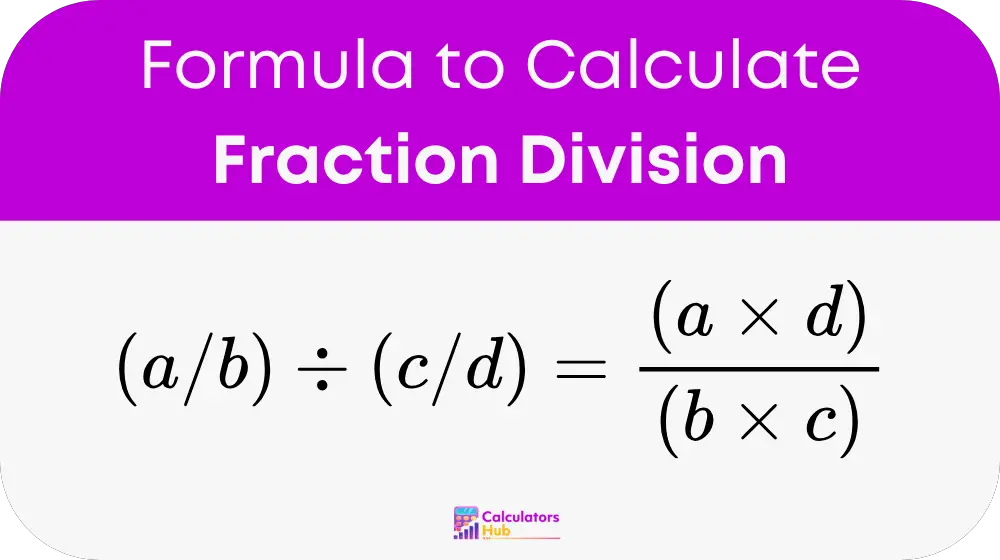A Fraction Division Calculator is a mathematical tool that simplifies the process of dividing one fraction by another. Division is often considered one of the more confusing operations with fractions, but this calculator automates the straightforward "invert and multiply" method. By inputting two fractions, the tool will flip the second fraction to find its reciprocal and then multiply the two fractions together to find the solution. It also simplifies the final answer to its lowest terms. This calculator is extremely helpful for students learning arithmetic, as well as for anyone in a trade like carpentry or cooking who needs to divide fractional measurements quickly and accurately.
formula of Fraction Division Calculator
The rule for dividing fractions is to multiply the first fraction by the reciprocal (the flipped version) of the second fraction.

Step-by-step process:
- Keep the first fraction (a/b) exactly as it is.
- Flip the second fraction (c/d becomes d/c). This is called finding the reciprocal.
- Change the division sign to a multiplication sign.
- Multiply the numerators (top numbers) together: a × d.
- Multiply the denominators (bottom numbers) together: b × c.
- Simplify the resulting fraction to its lowest terms, if needed.
Common Fraction to Decimal Conversions
This table shows the decimal equivalents for common fractions. This can be useful for quickly understanding the value of a fraction or for checking the reasonableness of a division result.
| Fraction | Decimal Equivalent |
| 1/16 | 0.0625 |
| 1/8 | 0.125 |
| 1/4 | 0.25 |
| 1/3 | 0.333... |
| 3/8 | 0.375 |
| 1/2 | 0.5 |
| 5/8 | 0.625 |
| 2/3 | 0.666... |
| 3/4 | 0.75 |
| 7/8 | 0.875 |
Example of Fraction Division Calculator
Let's work through an example of dividing 3/4 by 1/2.
Step 1: Keep the first fraction.
3/4
Step 2: Flip the second fraction.
1/2 becomes 2/1.
Step 3: Change division to multiplication and multiply the fractions.
(3/4) × (2/1)
Step 4: Multiply the numerators.
3 × 2 = 6
Step 5: Multiply the denominators.
4 × 1 = 4
The result is 6/4.
Step 6: Simplify the result.
Both 6 and 4 can be divided by their greatest common divisor, which is 2.
6 ÷ 2 = 3
4 ÷ 2 = 2
The simplified fraction is 3/2. As a mixed number, this is 1 1/2.
Therefore, 3/4 ÷ 1/2 = 1 1/2.
Most Common FAQs
Flipping the second fraction (finding its reciprocal) and multiplying is the rule that turns a division problem into a multiplication problem. Division is the inverse, or opposite, operation of multiplication. By multiplying by the reciprocal, you are effectively performing this inverse operation to find the correct answer.
A reciprocal is what you get when you invert a number or a fraction by swapping the numerator and the denominator. For example, the reciprocal of 2/3 is 3/2. The reciprocal of the whole number 5 (which can be written as 5/1) is 1/5.
To divide a fraction by a whole number, you first need to write the whole number as a fraction by putting it over 1. For example, if you are calculating 1/2 ÷ 4, you would first write 4 as 4/1. Then you can follow the standard "invert and multiply" rule: 1/2 × 1/4 = 1/8.
div>